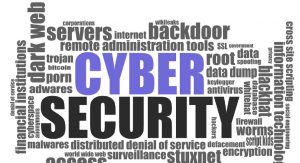The Indian government passed the Information Technology (IT) Act, 2000 to meet the increasing demand for regulating electronic commerce, electronic governance, and cybercrimes in the digital age. This Act was enacted to provide a legal framework for the secure use of technology, promote digital transactions, and protect citizens and organizations from cybercrimes. It is also known as the IT Act of 2000.
Basically, IT Act mainly focuses on cybercrime and its regulation. It takes up issues like online frauds, hacking, identity thefts, and data breaches, providing both preventive measures and penalties for offenders.
Cybercrimes under the IT Act, 2000
It classifies several types of cybercrimes and prescribes legal actions against them. Under this broad definition, cybercrimes include all illegal activities conducted through the internet or digital devices. The penalties for such crimes vary from fines to imprisonment according to the severity level of a crime.
Key Cybercrimes under the IT Act, 2000
Below is a tabular summary of the primary cybercrimes outlined in the IT Act, 2000:
Offence and Penalty Table
Scroll << - >>
| Section | Offence | Penalty |
|---|---|---|
| Section 65 | Tampering with documents stored within a computer system | Imprisonment for 3 years or a fine of Rs. 2 lakhs or both |
| Section 66 | Offences associated with computers or any act outlined in Section 43 | Imprisonment for 3 years or a fine up to Rs. 5 lakhs or both |
| Section 66B | Dishonestly receiving a stolen computer source or device | Imprisonment for 3 years or a fine of Rs. 1 lakh or both |
| Section 66C | Identity theft | Imprisonment for 3 years or a fine of Rs. 1 lakh or both |
| Section 66D | Cheating by personation | Imprisonment for 3 years or a fine of Rs. 1 lakh or both |
| Section 66E | Invading privacy | Imprisonment for up to 3 years or a fine of Rs. 2 lakhs or both |
| Section 66F | Cyber terrorism | Life imprisonment |
| Section 67 | Sending explicit or obscene material in electronic form | Imprisonment for 5 years and a fine of Rs. 10 lakhs |
| Section 67A | Sending material containing sexually explicit acts through electronic means | Imprisonment for 7 years and a fine of Rs. 10 lakhs |
| Section 67B | Depicting children in sexually explicit form and sharing such material through electronic means | Imprisonment for 7 years and a fine of Rs. 10 lakhs |
| Section 67C | Failure to preserve and retain the information by intermediaries | Imprisonment for 3 years and a fine |
Important Provisions Concerning Cybercrime in the IT Act
– Digital Signatures: The IT Act provided for the creation of digital signatures for authenticating electronic records, making transactions secure.
– Adjudicating Authority: The Act vested the authorities with powers to adjudicate complaints and settle disputes regarding cybercrimes and contraventions of the Act.
– Offences and Punishment: The IT Act has variously enumerated offences, specifying the punishment for each offense, as outlined in the table above.
Amendments to IT Act:
IT Act has been amended numerous times to address issues arising within the digital ecosystem. Some of the amendments are:
– IT (Amendment) Act, 2008: Provided some provisions for combating new threats, such as cyber terrorism, child pornography, and cyber stalking.
– Data Protection Laws: The IT Act does discuss the issue of data protection. Other newer laws include the Personal Data Protection Bill, which deals with issues on privacy protection.
Conclusion
The Information Technology Act, 2000 is an important legislation in India that governs the use of technology and addresses various cybercrimes. It provides legal remedies to individuals and organizations affected by cybercrimes and clearly sets out punishments for offenders. As the world becomes more digital, such laws become increasingly important to ensure the safety and security of digital interactions and information.
Though the IT Act forms a sound foundation for fighting cybercrime, there is always a need for amendment and improvement in the law to address new technological threats and to keep up with the changing face of cybercrimes.



